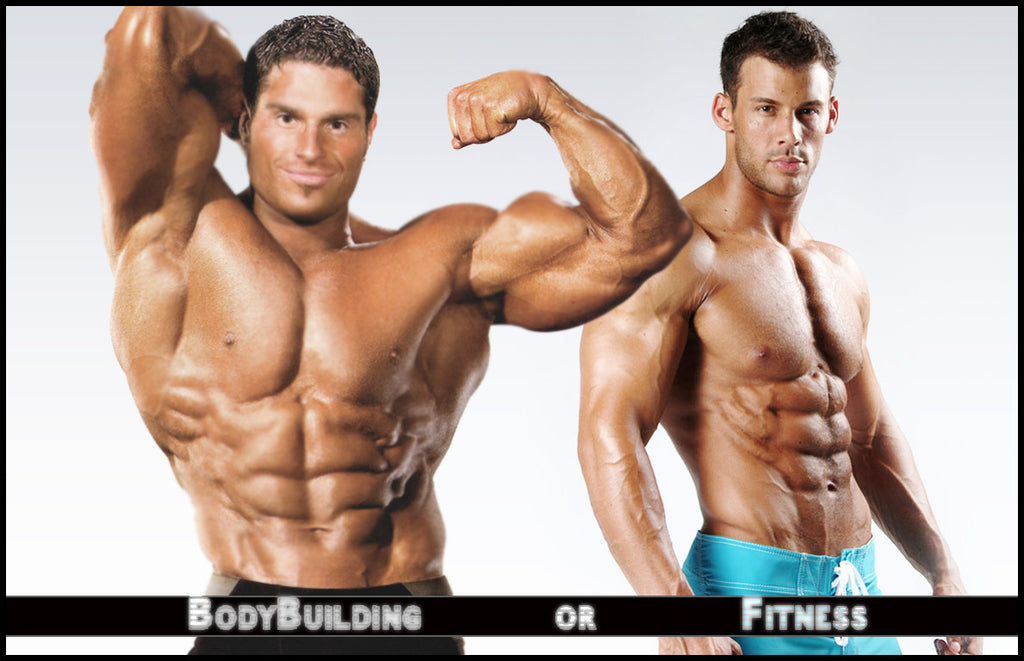You have no items in your shopping cart.

Difference Between Body Building And Fitness Workout
Posted by SupHub Inc. on
You always see a variety of people stepping into the gym for their training. Some only want to get big and increase muscle mass for aesthetic reasons, while others might be training for some kind of sport. Building muscles gives them more power, speed - and depending on their exercise regime - agility as well.
Then you have people who just want to stay in shape or enjoy socialising; and going to the gym gives them a chance to do just that and also be around people who are also passionate about fitness.
Bodybuilding vs. fitness workout
Although the two fitness regimes might seem similar to each other, they are in fact very different. Fitness workout/modelling is a more recent offshoot of exercising, while bodybuilding has been around since the late 1960’s.
Bodybuilders: All about the size

Bodybuilders lift heavy weights not just to develop functional strength but also to increase the size of their muscles. Those lifting for size usually work towards the ‘pump’. This technique helps bring oxygen and nutrients to your muscles via a strong blood flow.
The kind of lifting carried out by builders is aimed to create microscopic tears in the muscles, forcing the body to repair breakages and expand storage capacity. The process is known as hypertrophy, where the repairs cause the muscles to grow bigger.
The muscles are able to contain more energy as they grow larger, exerting greater force. The term ‘bodybuilding’ mainly refers to competitive exhibitions of ‘power’, and almost all lifters work to carve a body that will look awesome on stage.
Fitness workout: All about strength

When it comes to strength or fitness training, there is only one purpose to exercise: increasing the amount of force your muscles can produce to be able to life heavy objects. As long as they can exert maximum force when it comes time to lift, the shape and size of the muscles don’t really matter.
Normal workout or strength training is usually carried out with high weight and low reps. The action is primarily aimed for showing your central nervous system how to productively enrol motor units while lifting. Strengthening the muscles, reinforcing the joints, hardening the bones, while developing stronger connective tissue are some of the goals of many muscle-heightened workouts.
The significant distinctions
Bodybuilders and fitness models/trainers both spend a majority of their time at the gym, trying to achieve an eye-catching physique. Both showcases of muscular strength have some similarities such as sculpted bodies, for example. But there are also some major differences between the two;
A publication devoted to achieving fitness goals, Muscle Prodigy, suggests that while fitness modelling does have its roots in bodybuilding, there are numerous differences in how people from both categories train, eat and live.
The training
Bodybuilders rarely indulge in cardiovascular exercises or reps with a low amount of weights, placing special emphasis on gaining mass. They tend to regularly push their bodies to the breaking point; that is the point where they literally cannot do another rep-round. During recovery time, the ‘failed’ muscles rebuild and become stronger.
Professional fitness model and writer for BodyBuilding.com, Obi Obadike, says that a fitness trainer’s main goal is to be healthy and in shape. Trainers are not overly concerned about having bigger muscles as long as they are with looking their best in front of the camera or at competitions. Workout models spend more time crafting the major muscle groups across their bodies.
They will craft a perfect six or eight pack abdominal and pay attention to the legs and glutes. Compared to bodybuilders, their workout routines are generally shorter and more intense. They spend half of their routine lifting weights and the other half doing cardio. To create phenomenally toned muscles, fitness buffs usually carry out a high number of reps with smaller weights.
No daily ‘gyming’ for fitness fanatics
Another main distinction between working out and bodybuilding is the amount of activity each athletic-type requires. While a bodybuilding session may last around 2 hours, a fitness session, on the other hand, lasts 45 minutes, tops. The former usually demands constant hard work for a prolonged period – usually 5 to 6 times a week. A fitness workout, however, requires less exercise with lesser efforts and muscle pull.
The ideal diet

In many ways, the diet of a fitness trainer and bodybuilder is mostly the same. Both categories place special emphasis on carbs, vegetables, protein and fruits, while also consuming supplements such as creatine and protein shakes.
Bodybuilders are known for consuming more supplements to boost their exercise routines than fitness models. However, this is by no means a rule of the health industry. Many fitness trainers or workout-buffs include daily supplements as a part of their daily diets.
The primary difference between a bodybuilder and a fitness trainer, according to Obadike, is not the food choices, but the caloric intake per day. Obadike advises that many aspiring models consume no more than 2500 calories in one day.
In contrast, body builders must consume more than 5,000 calories per day, since 50 percent of the caloric intake comes from protein alone. The remainder is usually from low fat or carb options, such as multigrain, vegetables and fruits.
The living ways
It is necessary for Obadike, a professional fitness model and trainer, to maintain a state of supreme fitness at all times. ‘In training’ individuals or workout groups follow similar guidelines, striving to enhance their overall fitness throughout the year.
They must consistently maintain a strict training regime as well as a healthy diet. According to Obadike, this is primarily because they may get a call from the sport/modelling agency and must be in the best shape possible.
Bodybuilders usually train for size throughout the year, according to bodybuilding.com. They, however, lean down for competition season as athletic fairs are the main sources of income and motivation for majority of the ‘lifting’ lot.
Surprisingly, they may have up to 15 percent of body fat during the off season. Despite of a year-round training, body builders are not concerned with increasing body fat percentage until competition time draws near.
Two branches of the same tree
Both ‘normal’ workout and bodybuilding stem from the basic human desire to push physical limits and reach the ultimate fitness potential; thus making both of these athletic branches of exercise parts of the same tree. The only primary variance is the reason for training and the way trainings are carried out.
← Older Post Newer Post →





![6 Things You Should Do Before You Start Working Out [Muscle Building Tips]](http://suphub.com/cdn/shop/articles/muscle_build_small.jpg?v=1497249348)
